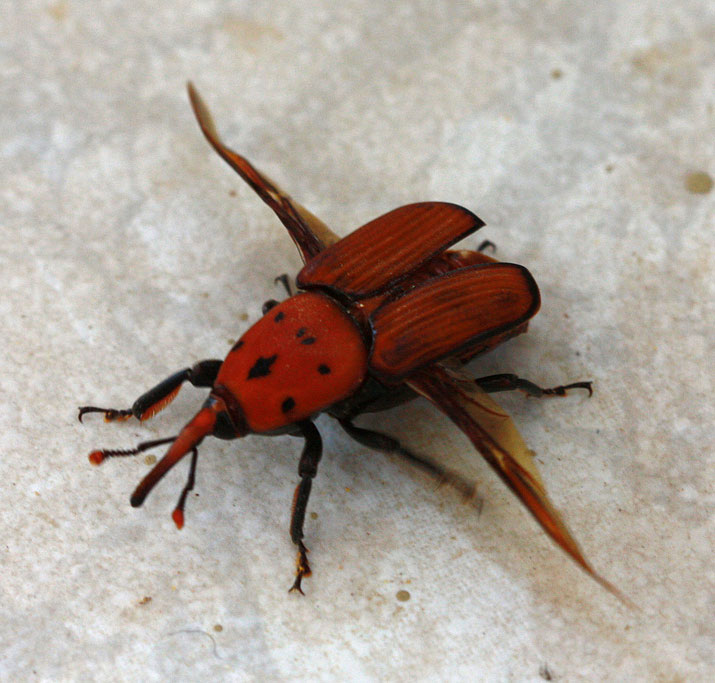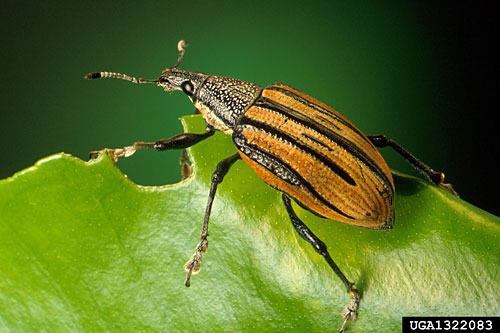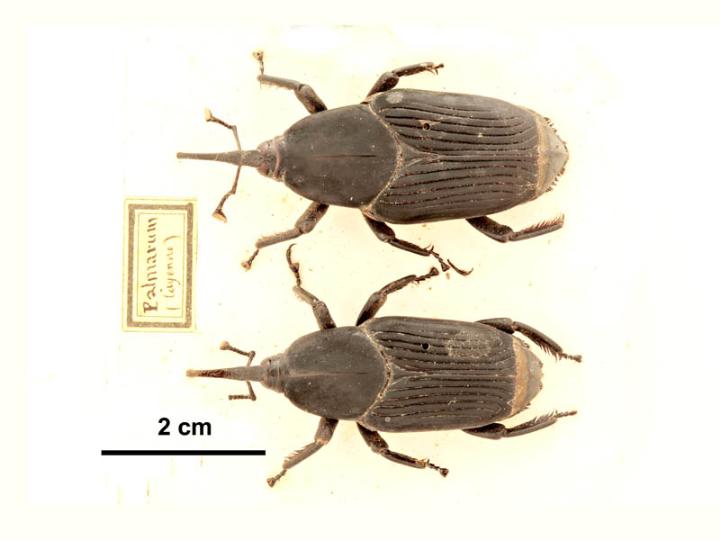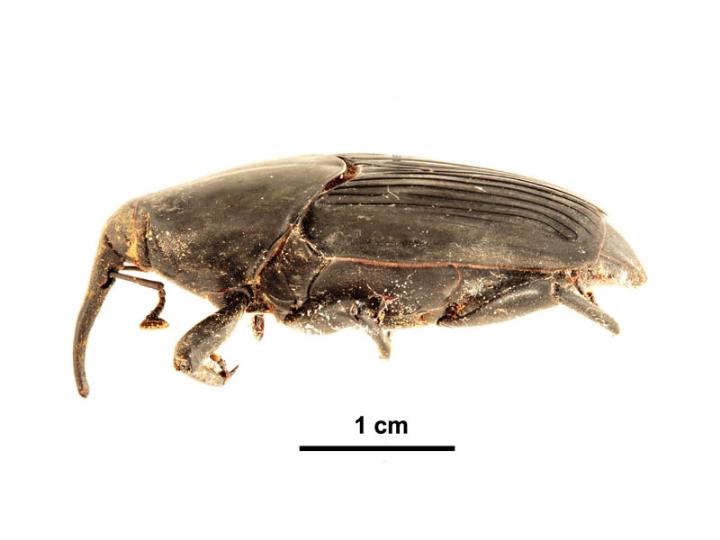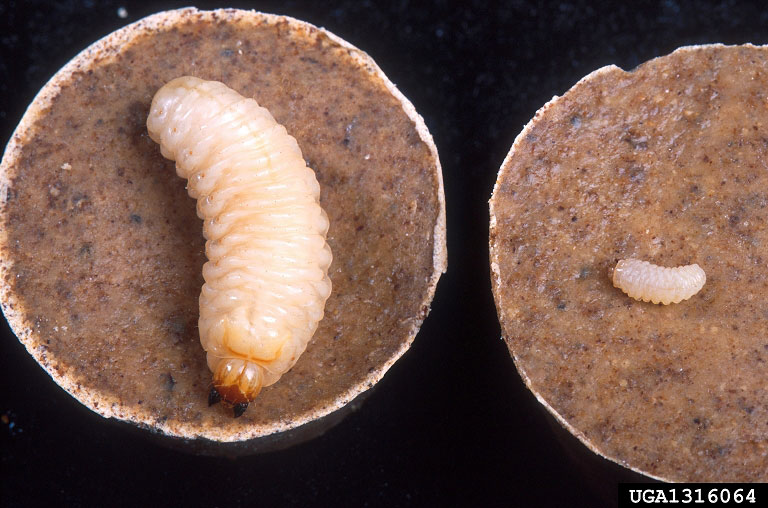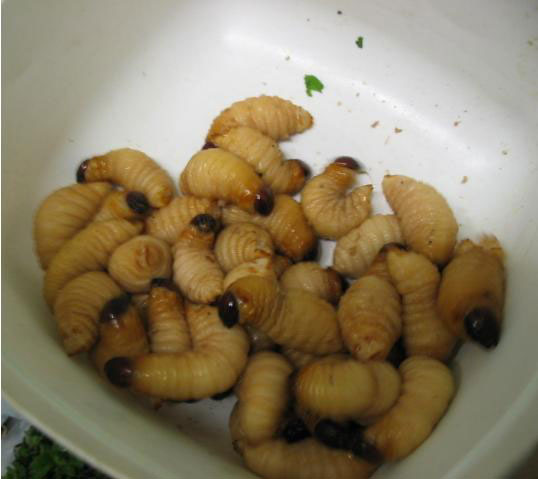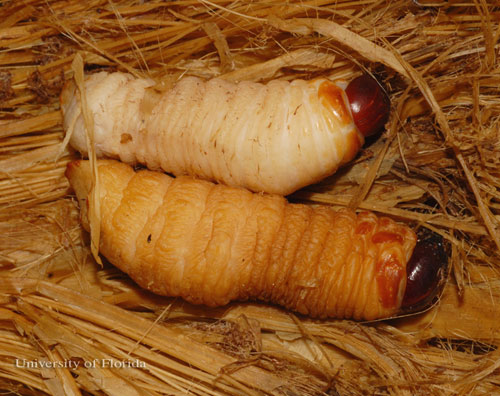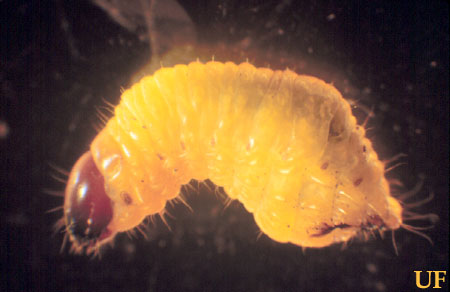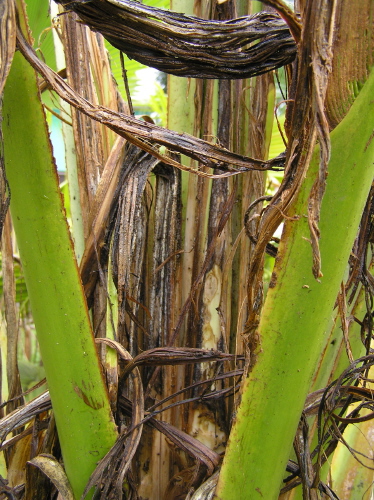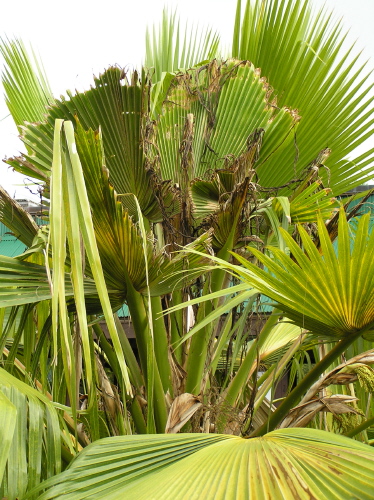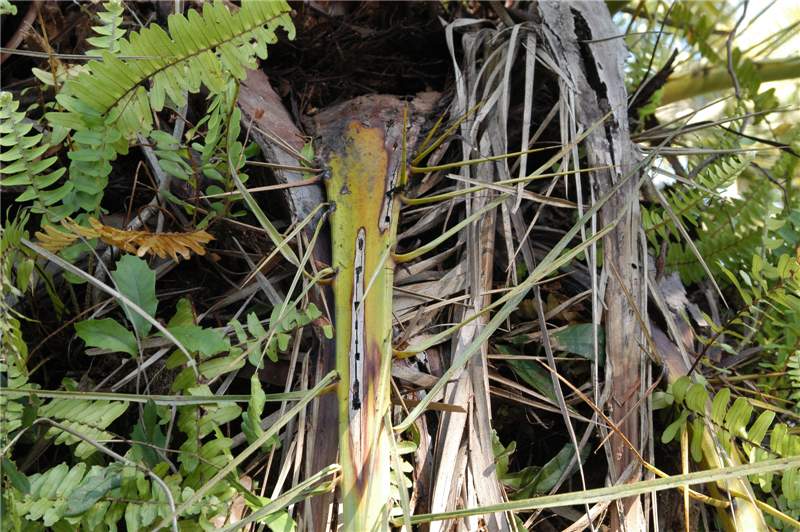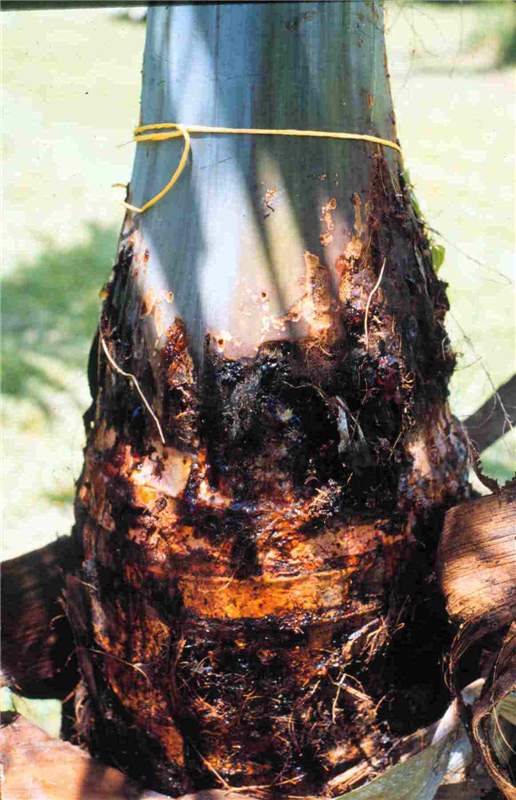Weevils
|
red palm weevil, Rhynchophorus ferrugineus, with hindwings extended; Photo by Sarah Faulwetter |
|
red palm weevil, Rhynchophorus ferrugineus, face view; Photo by Sarah Faulwetter |
|
diaprepes root weevil, Diaprepes abbreviatus, adult; Photo by Keith Weller, USDA Agricultural Research Service, Bugwood.org |
|
palm weevil, Rhynchophorus palmarum, adult, dorsal view; Photo by Lucinda Gibson and Ken Walker, Museum Victoria, Pests and Diseases Image Library |
|
silky cane weevil, Metamasius hemipterus, adult; Photo by Robin Giblin-Davis, © University of Florida |
|
diaprepes root weevil, Diaprepes abbreviatus, larvae; Photo by Peggy Greb, USDA Agricultural Research Service, Bugwood.org |
|
red palm weevil grubs, Rhynchophorus ferrugineus, are eaten as a delicacy in New Guinea and Southeast Asia; Photo by Hegariz, Wikimedia Commons |
|
palmetto weevil, Rhynchophorus cruentatus, grubs; Photo by Lyle Buss, © University of Florida |
|
silky cane weevil, Metamasius hemipterus, larva; Photo by Robin Giblin-Davis, © University of Florida |
|
heart rot caused by weevil damage to Pritchardia palm; Photo by Scot Nelson, University of Hawaii at Manoa |
|
leaf damage to Pritchardia caused by weevils; Photo by Scot Nelson and Mike Nagao, University of Hawaii at Manoa |
|
close-up of leaf base of Phoenix canariensis infested with Metamasius hemipterus; Photo by T.K. Broschat, University of Florida, IFAS/FLREC |
|
feeding damage cause by Metamasius hemipterus larvae on spindle palm, Hyophorbe verschafeltii; Photo by T.K. Broschat, University of Florida, IFAS/FLREC |
Rank & taxon
Family Curculionidae (excluding ambrosia beetles)
Description
Weevils are most diverse family in the world, occuring from the poles to the tropics, and feeding on all types of plants. They may range in size from around 1-50 mm long, and palm-associated weevils span the entire range. Most can be easily recognized by the elongated rostrum, or snout, bearing small mandibles at the tip. Another distinctive feature of weevils is their elbowed, club-shaped antennae. Weevils generally have 5-segmented tarsitarsi:
the portion of insect legs distal to the tibia (singular tarsus)
, though one segment is often so small that the tarsitarsi:
the portion of insect legs distal to the tibia (singular tarsus)
appear 4-segmented instead. Aside from these features, the morphological and biological diversity within the family is, as one might expect, immense. Larvae possess a large head capsule with correspondingly large mandibles, are legless, and move peristaltically. They are usually whitish or cream-colored, but often turn an orange-yellow color prior to pupation. Late instarinstar:
stage in an insect's life history between any two molts. The newly hatched insect is the first instar, and the adult (imago) is the final instar.
larvae may be significantly larger than the imagoimago:
the adult stage of an insect
, up to 64 mm long and 25 mm wide.
Distribution
Worldwide; over 4,600 genera, more than 51,000 described species
Biology/life cycle
Adult weevils are usually cryptic, taking refuge in sheltered areas of the palm, such as unopened inflorescences, petiole bases, floral peduncles, or larval-damaged areas in the crown and/or stem. Most palm-associated weevils chew an oviposition site with their mandibles, and deposit 30-400 eggs in specific plant tissues, depending upon the species. Larvae usually go through 5 to 10 instars prior to pupating, making a cocoon from host fibers. Weevils are often borers of palms, but many are considered beneficial, serving as pollinators.
Hosts
Palms: a wide variety of palm species
Other: nearly every plant species
Representative taxa on palms
Rhynchophorus palmarum, a large weevil (around 50 mm in length), is one of the most significant pests of plantations of Cocos nucifera (coconut palm) and Elaeis guineensis (African oil palm) in Central America. Large larval infestations can be lethal to adult palms.
Dynamis borassi, frequently confused with R. palmarum, is a pest of coconut palm in several South American countries. It usually attacks and destroys unopened inflorescences.
Additional comments
Palm and sugar cane weevils (Rhynchophorus palmarum, Dynamis borassi, and Metamasius hemipterus) in tropical America can be vectors for red ring nematode (Bursaphelenchus cocophilus), the causal agent of a potentially lethal disease, red ring disease. The nematode may also cause a chronic condition known as "little leaf," which can eventually lead to red ring disease. Coconut palm varieties are particularly susceptible to infestations of both the weevils and the nematodes, though African oil palm and date palm (Phoenix spp.) may also be affected.


